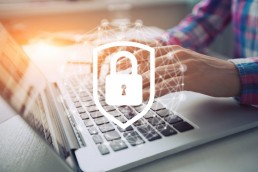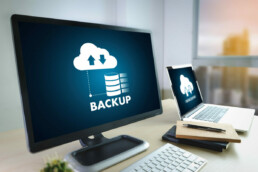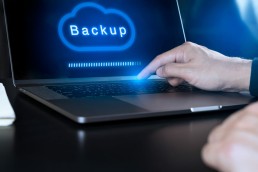Kaspersky virus protection: How to enter the activation code
Kaspersky virus protection: How to enter the activation code
The horror scenario for every computer user: unsuspectingly, you switch on your PC in the morning and – nothing happens! Or – even worse – a message appears saying that the computer has been hacked and that you can only get your data back by paying a ransom. These are only two of the countless possibilities that Trojan viruses and other malware can trigger. Kaspersky virus protection, which surrounds the computer like the walls of a medieval castle, can help.
What is Kaspersky virus protection?
Basically, every computer has weak points through which hackers can infiltrate their viruses. Simply being connected to the Internet can prove to be a weak point without sufficient protection. But even malware that is either loaded via the network or fed onto the hard disk via data carriers can destroy all data at once or render parts of the computer unusable. It is therefore urgently necessary for every PC user to install up-to-date software for the Virus protection installed. Kaspersky virus protection has proven to be the leading programme in this area. The software successfully fends off attacks by viruses, malware and Internet dangers such as dangerous websites and phishing attempts.
This is what the software contains:
- Virus Protection: In addition to a virus scanner, the programme also offers real-time protection that detects and removes viruses and Trojans before they can penetrate the computer's system.
- Firewall: The firewall included in the version Kaspersky Total Security 2021 version analyses data traffic and protects IT systems securely against attacks or unauthorised access
- VPN: Kaspersky Total Security 2021 also includes a VPN that allows you to surf the internet anonymously, for example for protection when using an unsecured network.
- Special features: The virus protection programme from Kaspersky also scores with extras such as parental control, vulnerability scanner, spam filter, update assistant, game mode, filter for search results, protection for online banking, password manager and a filter for advertising.
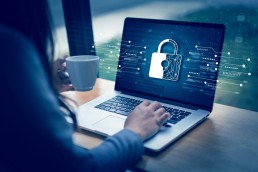
Kaspersky virus protection requires an activation code
To be able to use Kaspersky’s virus protection, you must first enter a 20-digit activation code. Two methods are available for this:
Enter activation code during installation
- The first thing to do is to check that your PC has the correct date. Only then should you enter the code in the window that opens during the installation.
- After entering the code in the corresponding fields, click on the button "Activate".
- If a message appears stating that the software has been successfully activated, click the "Finish" button.
- The Kaspersky Anti-Virus Licensing window appears. Details on the activation of the software are displayed here, which you can follow step by step.
Activation after installation
- The first step is to open the Kaspersky Anti-Virus application.
- Then select the option "Enter activation code" in the lower right area.
- The window "Licence management" appears, here you must select the item "Activate programme".
- The Kaspersky Anti-Virus activation window opens. To activate, proceed as described above.

Avast Premium Security 2020
The second antivirus software we want to introduce today is Avast Premium Security 2020. The paid version contains all the features you might already be used to from the free version, plus those of Avast Internet Security. This includes:
- Antispam filter: It detects unwanted emails and denies them access to the mail program.
- Firewall: With this software, protection can be controlled directly from the user interface.
- Automatic programme updater: which always uses the latest version.
- Real-time protection: With it, one can monitor all activities of the computer such as running programmes and files in real time.
- FileRep and WebRep: These features check files and websites against databases. If something is not trustworthy, the software informs you immediately.
- Virus Container: This is an isolated area on the hard drive where suspicious or dangerous files are kept safe.
Header Image: © Shinonome Production, stock.adobe.com
EaseUs Todo Backup: How to back up your files
EaseUs Todo Backup: How to back up your files
Suddenly the desktop goes dark, the PC won’t boot up. Or you overwrite an important document and don’t rename it. Or a virus eats through the most important data and destroys it. Or … the possibilities of losing important files are manifold. How are you supposed to restore them if no regular data backup was made beforehand? Often this does not work at all – and this can have fatal consequences. The good advice: regularly make a data backup with a backup on your PC or, even better, with top software such as EaseUs Todo Backup make.
This is why data gets lost
Starting with the Windows 7 operating system, the computer automatically creates a data backup on a regular basis, thus acting almost like a kind of automatic backup. Nevertheless, it can quickly happen that important files are lost The most common reasons for this are:
- Technical problems: Older hard disk drives (HDD) in particular wear out over time. The danger is less acute with modern SSD hard drives, but data can still be lost. For example, due to demagnetisation or sudden power interruption. According to the manufacturer, hard disks generally have a maximum lifespan of 10 years. Without regular data backups, it is difficult to restore sensitive files afterwards. Suitable data backup software such as EaseUs Todo Backup is therefore essential.
- Human error: Shocks, for example if the laptop or external hard drive is dropped, but also liquids that penetrate the inside of the computer - such as a spilled coffee - quickly lead to data loss. It is not uncommon for files to be accidentally deleted, overwritten and incorrectly formatted. Another source of error is the accidental download of malware such as viruses or ransomware.
- Force majeure: No one is protected from unforeseeable events such as water damage, fire or earthquakes. The risk of suffering a data loss as a result can be reduced by regular backups and a data backup using the cloud or EaseUs Todo Backup.
- Theft: In fact, it is not at all uncommon, especially in professional life, for hackers to steal data. A good firewall, careful handling of files and regular data backups help to prevent this.

Backing up files with Backup PC and EaseUs Todo Backup
Computers running the Windows 7 operating system or higher automatically create a backup as a backup PC Another option is to regularly back up files by using a special Backup PC computer is used like a kind of external hard disk. All „work computers“ are then connected to this computer and the data backup takes place automatically.
EaseUs Todo Backup instructions
Regular data backup is much easier and more convenient with EaseUs Todo Backup.
This is how to proceed
- First, Todo Backup is downloaded as an installation file from the manufacturer's website.
- Then you select the hard drive you want to back up.
- You can choose the default function "hard disk" or select a storage location that is not directly on the PC, such as a USB stick or an external hard disk. Alternatively, a cloud storage can be specified as the storage location.
- When the programme is started, EaseUs Todo Backup offers the following options:
- Drive/Partition Backup
- File backup
- System backup
- Smart backup
- Clonesn
- System Clone
- If you want to create a simple backup copy of the Windows operating system with all its files, just click on "System backup". The software then automatically selects the correct partition.
- "Smart-Backup", on the other hand, regularly backs up the data that has been changed and newly added at predefined times. For example, always on Fridays after work at 6 pm.
- A time when the PC is not in use is ideal for the backup, as the process can take some time. Depending on the selection made beforehand, the PC either shuts down after the backup or switches to energy-saving mode.
- It is advisable to make another selection beforehand. Depending on what is required, the functions "full backup", "incremental" and "differential backup " are available.
Header image: © jirsak, stock.adobe.com
Instructions: Create a backup - now work safely at home!
How to make a backup - now work safely at home!
Especially in times of the home office, purely private data such as pictures, e-mails or music collections are joined by business data, which is indispensable for a smooth, optimised workflow. And what if there is a crash? Then everyone who does at least part of their job at home will be in trouble! So it’s high time for a professional backup– here’s how to do it!
Definition: Data backup
The hard disk of a computer stores all data. But also the browser favourites and especially the access data to the computer are stored here. Over time, a veritable data library is created in the heart of the computer Practical on the one hand – but risky on the other. Unfortunately, the hard disk also has a limited lifespan. Malfunctions and defects can occur, data can be lost or the computer can simply no longer be started.
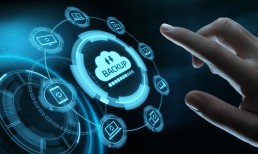
Caution: Danger
Another threat to sensitive data is malware, such as a computer virus or ransomware, which will not release data until a ransomis paid. Due to so many possibilities of data loss, it is essential to make a regular backup on two independently operating storage media How often this data backup should take place depends, among other things, on the frequency with which data is changed. In the home office, with its constant workflow, a daily data backup is recommended With a backup, a copy of all data is made manually or by means of suitable software. This is done with the help of an external storage medium, such as an external hard drive. From there, a so-called data recovery is possible at any time.
Backup methods
Basically, several methods are available for data backup – and each has its advantages and disadvantages.
Manual backup:
This option is inexpensive but requires a bit of discipline. In any case, it should be done every time data is changed or new data is added Tip: With a tightly timed, regular schedule, it is often easier to maintain this discipline Procedure: First, a data carrier (external hard disk) with sufficient storage volume is connected to the computer. Then copy the data from the source data carrier (computer hard disk) to this external hard disk. Disadvantage:As a rule, the computer’s system data cannot be backed up with the manual backup.
Semi-automatic backup:
Here, software is used that, depending on the version, even backs up the entire system. Another option is to back up specific files or folder structures. Procedure: Again, an external data carrier (hard disk or DVD) is connected to the computer. Alternatively, the data can also be saved under a network address (cloud). For the backup of the data, a time must be specified at which the programme is to carry out the backup. Tip:Do not specify the time during normal working hours, as the data backup may require a high level of computer performance.
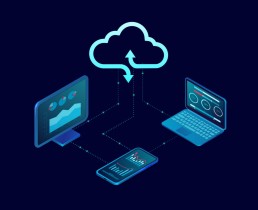
Fully automatic backup:
For this, appropriate backup software is set up only once. The programme then creates backups independently in the specified period and according to the desired frequency. Procedure: Connect an external data carrier as usual, then install the software. Now enter when and how often the programme should make the backups. In most cases, you can also set up certain types of backups Advantage: With the fully automatic data backup, the software does everything by itself, including the system backup.
Suitable backup programs
AOMEI Backupper Professional
AOMEI Backupper Professional enables backups of hard disks, individual folders or files as well as the complete system. The programme is time or event controlled and can even delete outdated backup folders on its own.
Stellar Photo Recovery
With Stellar Photo Recovery you can recover damaged, deleted or lost photos, music and video files. The programme can recover data on internal as well as external drives, CDs, DVDs or memory cards.
Header image: © onephoto, stock.adobe.com
Never lose data again - create backups like the pros
Never lose data again - back up like the pros
There’s hardly a job today that doesn’t require a computer. This means that a vast amount of data is not only sent through the lines, but is also stored on the computers‘ hard drives. And what happens if the computer breaks down? Are all these important and sometimes highly sensitive data lost forever? Not if the data has been backed up in a suitable way. This is exactly why a regular backup is so important! We show you what is important.
Backup with the proven 3-2-1 rule
Customer data, but also photos, forms, passwords and programmes are gone when the PC is gone. This is not only annoying, but also dangerous. Because all kinds of illegal mischief can be done with such data. Once the data has fallen into the wrong hands, it is essential to protect it from further access. But how is that supposed to work if, for example, you don’t know your passwords or can no longer find the licence key for this or that programme?
The 3-2-1 rule established by security experts helps here
- All data should be available 3 times: On the PC (or notebook etc.) and on two other backup media.
- The backups should be stored on 2 different modern data carriers. For example, in a suitable cloud AND on an external hard drive.
- One of these storage media should always be kept encrypted off-site. This way, nothing is lost even in the event of a burglary.

Recovery tools and more: important backup programmes
There are many good tools that can be used to back up, transfer and even restore data . These include
- Especially for SMEs (small and medium-sized enterprises), the Genie Backup Manager has proven itself. It is suitable both for backing up data and for restoring lost data.
- The EaseUS Data Recovery Wizard is able to recover deleted data. It doesn’t matter whether the data was accidentally deleted or fell victim to a hardware error or even a virus. The tool is compatible with FAT file systems, which means that files from memory cards or USB sticks can also be rescued and repaired.
- With EaseUS Partition Recovery it is even possible to recover complete hard disk partitions.
Those who work with several computers are best served with the software PCmover is the best choice. The programme transfers programmes, settings and files from one computer to another without losing important system files. Even security and registry settings of multiple users are preserved.
Which data carriers are suitable for a professional backup?
The method used to back up data depends on how much data is involved, how long it is to be retained and at what intervals the backup is to take place. CD’s and DVD’s or Blu-Ray’s only have a limited storage volume and a limited life span. An external hard disk is much more suitable for backup. Even more suitable is an RDX removable hard disk that automatically creates a backup while the PC is in operation. In terms of backup, data backup via the network to NAS as well as via a cloud or an FTP server is becoming more and more established.
Header image: © ST22Studio, stock.adobe.com
Never lose data again - create backups like the pros
Never lose data again - back up like the pros
There’s hardly a job today that doesn’t require a computer. This means that a vast amount of data is not only sent through the lines, but is also stored on the computers‘ hard drives. And what happens if the computer breaks down? Are all these important and sometimes highly sensitive data lost forever? Not if the data has been backed up in a suitable way. This is exactly why a regular backup is so important! We show you what is important.
Backup with the proven 3-2-1 rule
Customer data, but also photos, forms, passwords and programmes are gone when the PC is gone. This is not only annoying, but also dangerous. Because all kinds of illegal mischief can be done with such data. Once the data has fallen into the wrong hands, it is essential to protect it from further access. But how is that supposed to work if, for example, you don’t know your passwords or can no longer find the licence key for this or that programme?
The 3-2-1 rule established by security experts helps here
- All data should be available 3 times: On the PC (or notebook etc.) and on two other backup media.
- The backups should be stored on 2 different modern data carriers. For example, in a suitable cloud AND on an external hard drive.
- One of these storage media should always be kept encrypted off-site. This way, nothing is lost even in the event of a burglary.

Recovery tools and more: important backup programmes
There are many good tools that can be used to back up, transfer and even restore data . These include
- Especially for SMEs (small and medium-sized enterprises), the Genie Backup Manager has proven itself. It is suitable both for backing up data and for restoring lost data.
- The EaseUS Data Recovery Wizard is able to recover deleted data. It doesn’t matter whether the data was accidentally deleted or fell victim to a hardware error or even a virus. The tool is compatible with FAT file systems, which means that files from memory cards or USB sticks can also be rescued and repaired.
- With EaseUS Partition Recovery it is even possible to recover complete hard disk partitions.
Those who work with several computers are best served with the software PCmover is the best choice. The programme transfers programmes, settings and files from one computer to another without losing important system files. Even security and registry settings of multiple users are preserved.
Which data carriers are suitable for a professional backup?
The method used to back up data depends on how much data is involved, how long it is to be retained and at what intervals the backup is to take place. CD’s and DVD’s or Blu-Ray’s only have a limited storage volume and a limited life span. An external hard disk is much more suitable for backup. Even more suitable is an RDX removable hard disk that automatically creates a backup while the PC is in operation. In terms of backup, data backup via the network to NAS as well as via a cloud or an FTP server is becoming more and more established.
Header image: © ST22Studio, stock.adobe.com

